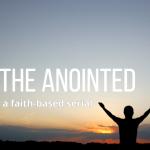The Sacrificial Body And the Day of Doom: Alchemy And Apocalyptic Discourse in the Protestant Reformationby Urszula Szulakowska links together early modern alchemy with Reformation sacramental theology, art, and interpretations of Revelation. At the center she places Stefan Michelspacher’s 1616Cabala: Spiegel der Kunst und Natur, explaining that this Tyrolean artists and medical doctor “designed his own illustrations which depict in subtle alchemical termssome important themes from the Revelation of St. John concerningthe fate of humanity on the Day of Judgement. The engraving ofChrist is an alchemical homily on the sacraments of Baptism andthe Eucharist, the only two recognised by Luther. The sacrament ofCommunion is here employed as a metaphor of the philosophersstone, a chemical and spiritual transmutation of gross matter into adivine substance comparable to the body of the resurrected Christ” (7).
During the sixteenth century, alchemy ran parallel to sacramental practices:
“the physician acted on thehuman body in the same manner as God worked on the great universalMacrocosmic Body. In like manner, the Paracelsian physicianintroduced the universal panacea, a liquid form of the philosophersstone, into the alchemical alembic that was the Microcosmic humanbody. This alchemical medicine was permeated with the starry virtuesof the heavens and the grace of Christs Spirit, redeeming the bodyand soul of the patient by granting him not only an extended lifeon earth, but even eternal salvation” (11).
This marked a shift in alchemical opinion. Earlier practitioners, following the lead of Erasmus and other Humanists, considered the Eucharist irrelevant to the spiritual life. But Michelspacher and others “evolved a view of the Eucharistic miracleas being a type of metaphysical chemistry, which was performednot only through the power of Christs Spirit, but also through theastral virtues of Nature, or even by kabbalistic manipulation” (40). The alchemist’s mass was supposed to accomplish what alchemy did, healing and transforming flesh into a higher substance (47-48).
The intertwining of themes is well illustrated by Szulakowska’s analysis of a legend concerning John the seer and its artistic depictions: “The supposed author of Revelation was John the Evangelist andhe too had a peculiar association with Eucharistic soteriology. Oneof Johns medieval attributes was a chalice, since according to theapocryphal Acta Johannis he had been offered a drink of poison thatturned into wine on touching his lips. It is noteworthy that Johnspoisoned chalice found its way into the sixteenth century alchemicalemblems of the Rosarium Philosophorum. The cup appears in a woodcutentitled ‘Aenigma Regis’ where it is held by a crowned hermaphrodite(the philosophers stone). Out of the chalice emerge threesnakes, referring to the three alchemical principles of sulphur, mercury,salt. The couplet beneath this picture states: ‘Hie [sic]ist geboren der Keyser aller ehren (sic)/Kein hher mag uber jngeboren werden. The snakes represent the poisonous character ofthe prime matter in its components of sulphur, mercury and salt.Transmuted into the elixir of life, it became the alchemical equivalentof the healing blood of Christ, the ‘coelum’” (50).
She concludes that the Paracelsians transformed the Catholic Mass into a model for the alchemical quest for perfection: “The rite of Communion was regarded as a sacrifice, the sameas Christs original sacrifice, but one transposed out of historical timeinto the sacred space of eternity. The Paracelsian alchemist regardedhimself as performing the same rituals in his laboratory work, therebypurifying matter in a simulation of the torments of Christ and ofthe souls in Purgatory in preparation for the day of Judgement. Theonly action that could ever make the flesh worthy of entering heaven,according to Catholic doctrine, was the eating of God. Through theact of Holy Communion, Christ and humanity became one substance,a pre-figuration of the body made divine at the Resurrectionof the Dead. Christs torment in the sacrificial rite was the meanswhereby the human body could be liberated from its corruption. Onthe model of Christ, the bodies of his followers became objects ofmartyrdom, a purgative process in the course of which physical substancebecame Christ-like, capable of eternal life. The body was notworthless, though torture was an essential precondition of its salvation” (162).















